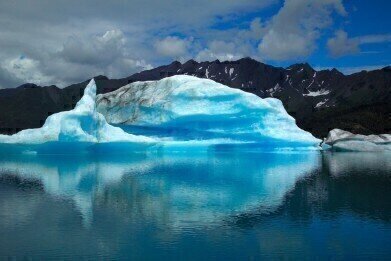Environmental Laboratory
How Is Climate Change Predicted?
Dec 04 2014
Climate change is becoming a serious concern. According to the World Health Organisation (WHO), the result of human activities over the last 50 years has been the release of sufficient carbon into the atmosphere to change the climate. This levels of carbon trapped beneath the atmosphere has increased by over 30% since before industrial times, resulting in a number of increased health risks. This includes deaths from weather extremes such as extreme temperatures, floods and hurricanes; a scarcity of fresh water; increased risks of waterborne diseases, and malnutrition caused by decreased crop yields.
Last month, EU leaders decided to reduce greenhouse emissions gas by 40% by 2030, compared with 1990 levels. This deal was made despite a conflict of interests between EU members, but was met with disappointment from environmental campaigners who felt that it did not go far enough. In December 2015, the United Nations Conference on Climate Change will be held in Paris, with an objective to produce a universal and legally binding agreement on climate change, from all the world’s nations.
While leaders worldwide are making plans to tackle climate change, how is climate change actually predicted?
The role of supercomputers in predicting climate change
Extremely powerful supercomputers capable of astonishing data-processing speeds have been used to combat climate change for a number of years. By running simulations and models to predict future weather patterns, these increasingly advanced and efficient machines have been used to understand the impacts of climate change. Latest global climate change models have shown high-resolution simulations that are much more detailed and accurate than previous ones.
The accuracy of the models was tested by researchers at the Lawrence Berkeley National Laboratory. Undertaking analyses between the years of 1979 and 2005 on resolutions of 25 km, 100km and 200km, they found that newer simulations far more closely reflected actual weather events. Plus, these simulations were also more capable of displaying strong storms like hurricanes and cyclones. This difference been previous and later simulations were most notable in mountainous regions.
The high-resolution simulations totalled 100 terabytes of data and were able to display the terrain much more accurately. This meant that weather events such as rain and snow could be predicted in a much more precise manner, unlike previous simulations, which took an average of the altitude in mountainous regions. Newer simulations also predicted more hurricanes and storms, which was a better reflection of actual weather patterns. This is an important factor in revealing impacts of climate change as it helps to predict changing storm patterns, powerful storms being a weather phenomenon that scientists believe will increase in number and frequency. Lead researchers believe that the new models will enable them to run a future case scenario that will better reveal how climate change influences weather conditions in different locations.
Looking back at climate changes
While we have many technologically advanced ways of predicting climate change, we can look back in a much simpler way. For the last three years, Dr. Intan Suci Nurhati had gone on expeditions to islands off Singapore, Indonesia as well as Kuwait in search of large corals. Why exactly? According to Dr. Nurhati, “Corals provide us with a wealth of environmental data extending from the distant past to present. For instance, the fast-growing Porites corals can grow for decades to centuries at a rate of about 1 to 2 cm per year. Just like trees, corals also have annual banding as they deposit layers of calcium carbonate through time.” For more information on this fascinating topics, read this article: Corals as Natural Archive of Environmental and Climate Changes.
Digital Edition
IET 34.2 March 2024
April 2024
Gas Detection - Biogas batch fermentation system for laboratory use with automatic gas analysis in real time Water/Wastewater - Upcycling sensors for sustainable nature management - Prist...
View all digital editions
Events
Apr 30 2024 Melbourne, Australia
Apr 30 2024 Birmingham, UK
May 03 2024 Seoul, South Korea
May 05 2024 Seville, Spain
May 06 2024 Minneapolis, MN, USA


















